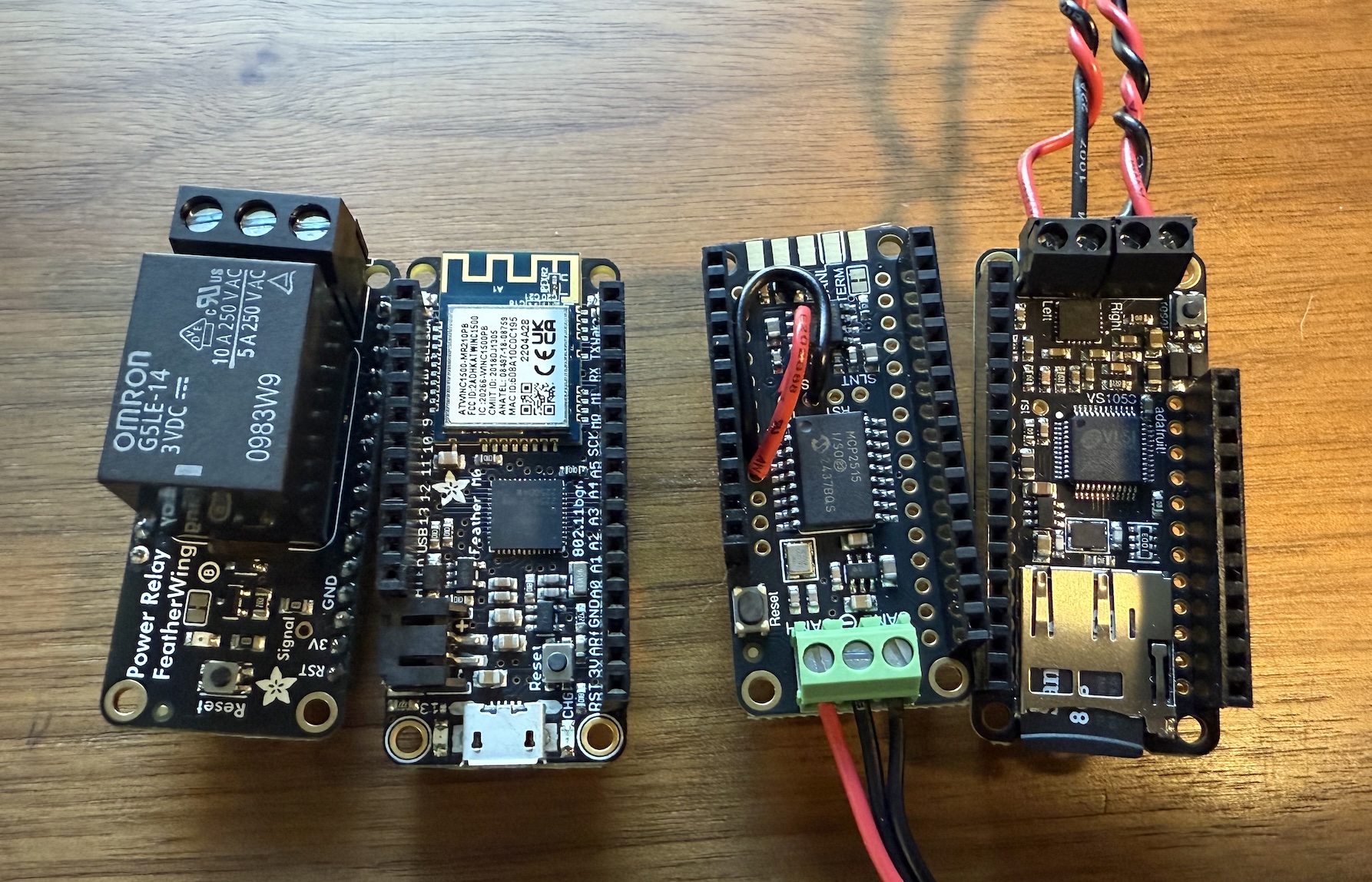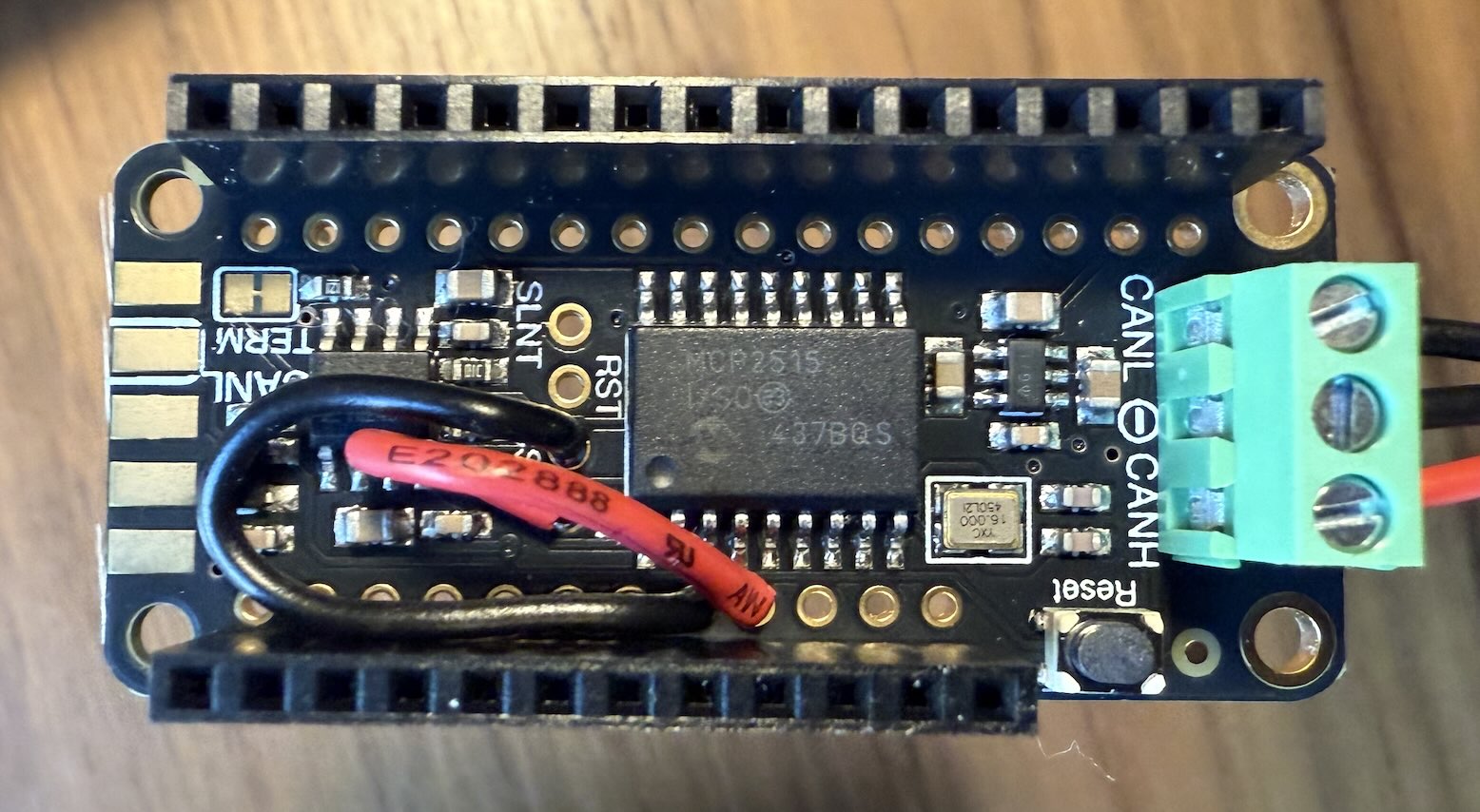A CBUS Module for Model Railway Accessories – Part I: Hardware
My model railway club (ETE) is building a few new modules for our layout. One of them features a brewery, based on this kit from Faller. It’s a detailed model, and we’re lucky to have Alan—an expert diorama builder—bringing it to life. Great work, Alan!
The bottling section is motorized, with rotating carousels of bottles, and the building includes simple yet effective lighting.
One great feature of successful layouts—especially for younger visitors—is interactivity. Think Miniatur Wunderland style.
So, I set out to build a simple module triggered by a few strategically placed buttons. When pressed, they turn on the carousels, activate lights, and play bottling plant sound effects.
A fellow club member mentioned the excellent BBC Sound Effects Library—a treasure trove of audio clips worth exploring.
Before using BBC clips, make sure to review their licensing terms.
I’ve had good results with the Adafruit VS1053 audio board, so sound playback was the easy part. Adafruit also makes a handy relay “shield.” With both boards, I had the basic components to animate the brewery.
Our resident electronics expert, Jan, has been working extensively with CBUS modules. He introduced me to the CBUS specification from MERG. I picked up an Adafruit CAN controller and added it to the mix. CBUS allows us to control the module centrally—while still supporting local button presses.
Hardware
I’m using four main boards:
- Relay “shield” – Simple relay board, controlled with one I/O pin.
- Feather M0 WiFi board – Acts as the CPU. I’m not using Wi-Fi yet, but it’s there if needed. It’s based on ARM’s Cortex M0 processor—a solid microcontroller with great peripheral support.
- CAN bus controller – Based on the reliable MCP2515 chip.
- VS1053 audio board – With built-in SD card slot and onboard amplifier.
The VS1053 board has fixed pin assignments, but the relay and CAN boards allow pin remapping—making stacking simple.

Pin Configuration
| Device | Function | I/O Pin | Config | Notes |
|---|---|---|---|---|
| Relay | Activate relay | 11 | Output | |
| Audio Data CS | Chip select for audio data | 6 | Output | VS1053 uses separate SPI buses |
| Audio Control CS | Chip select for audio commands | 10 | Output | |
| SD CS | Chip select for SD card | 5 | Output | Shares the board with the audio module |
| Audio DREQ | Interrupt for audio | 9 | Input | Used for background sound playback |
| CAN CS | Chip select for CAN | 12 | Output | |
| CAN INT | CAN interrupt pin | 13 | Input | Not used in this prototype |
Only the CAN board required reassigning default pins (due to conflicts), but it conveniently includes jumpers and breakout holes for Audio Data CS and DREQ:

The flexibility of the Cortex M0 makes pin assignments easy—most pins support inputs, outputs, and interrupts.
Sound Board Wiring and Speakers
The VS1053 board includes a built-in amplifier, so connecting speakers is straightforward—just keep within spec: 4–8Ω, 3W.
It supports synchronous operation, but background playback via hardware interrupt is much smoother. The Adafruit library handles this well. Since SD card access during sound playback can be tricky, I simply disable SD access while audio is active.
CAN Wiring and the CBUS Specification
CAN is a 3-wire bus, designed for long-distance, noisy environments. It’s common in industrial and automotive settings.
OBD-II—the standard for car diagnostics—is built on CAN.
CBUS is a protocol created and maintained by MERG (Model Electronic Railway Group) to control model railway layouts.
MERG is an international, UK-based society focused on electronics and computing in model railroading.
Their documentation is excellent and worth reading.
In CBUS, systems are made up of producers and consumers of events. Events originate from a node, and both nodes and events are identified by 16-bit numbers—allowing up to 65,535 nodes and 65,535 events per node. What each event means is up to the consumer.
Accessory control is done with two CBUS commands: ACON (activate) and ACOF (deactivate), using this format:
| Byte 1 | Bytes 2–3 | Bytes 4–5 |
|---|---|---|
| Opcode | Node Number (Hi/Lo) | Event Number (Hi/Lo) |
The ACON and ACOF opcodes are standard, with respective values of 0x90 and 0x91.
This simple architecture can support very complex layouts. A single event can trigger multiple actions on multiple consumers.
In this project, my module will act as a consumer. One event triggers the relay, and others trigger different audio clips from the SD card.
Example:
| Node Number | Event Number | Action |
|---|---|---|
| 128 | 1 | Relay |
| 128 | 2 | steam.mp3 |
| 128 | 3 | bottling.mp3 |
In Part II, I’ll cover the software architecture that brings it all to life.